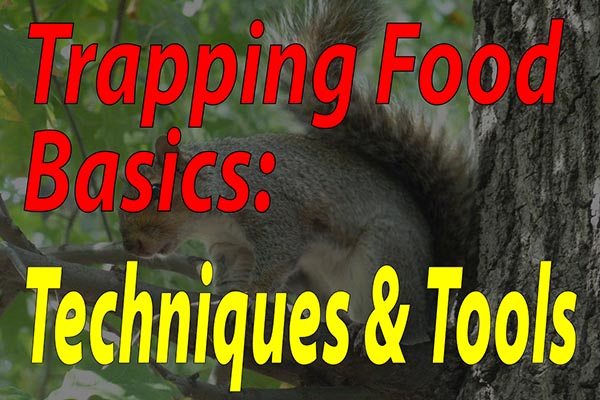Techniques And Tools For Trapping Food In A Survival Situation
Trapping food is a necessity in any survival situation. No matter how well you prepare for your long distance ride, you can never be too preparted for “s**t happens”. Going too long without it can result in a multitude of dangerous, and sometimes fatal consequences. That’s why knowing how to trap and catch animals is an essential survival skill every adventure rider should have. Without it, you risk denying your body of what it needs to function correctly – calories, protein, nutrients, and more.
 Below, you’ll find five of the most effective trapping techniques for capturing several different types of wild game in a variety of locations. I’ve also included a list of the tools needed for each method and a link to a resource for further reading.
Below, you’ll find five of the most effective trapping techniques for capturing several different types of wild game in a variety of locations. I’ve also included a list of the tools needed for each method and a link to a resource for further reading.
Trapping Food Technique #1: Fixed Snare
The fixed snare is one of the most straightforward traps to make and set up. It uses solid wire for the snare, and twigs for the triggering mechanism. The biggest flaw of the fixed snare trap is its limited use. Often, trapping the creature will bend and kink the wire making it less durable with subsequent applications.
Materials needed for the Fixed Snare:
- Length of solid wire or cable
- Twig
Further Reading: Snaring: The Fixed Snare
Technique #2: Drag Noose
The drag noose is excellent for densely vegetated animal runs. It’s made using a loop that rests on two forked sticks and placed just above the route. Once the animal runs through the noose, it will take off running, pulling the loop and the stick it’s tied to with it. The stick will snag on the vegetation and trap the animal.
Materials needed for the Drag Noose:
- A short length of rope
- Twig or stick (to anchor the noose)
- Two forked sticks
Further Reading: SurvivorDude: How to Make a Drag Snare
Trapping Food Technique #3: Twitch-Up Snare
The twitch-up snare involves bending a small hardwood sapling and using a triggering device to add increased power to the snare. It’s useful for capturing medium-sized game. Once the animal triggers the snare, the sapling will snap back into its upright position, snatching the noose and animal in the process.
Materials needed for the Twitch-Up Snare:
- A small hardwood sapling (w/ branches and foliage removed)
- Two forked sticks (w/ a short and long leg each)
- A short length of rope
Further Reading: How to Make a Twitch Up Snare
Technique #4: Drowning Snare
The drowning snare is a very useful trap for capturing and quickly killing water-dwelling animals like beavers. The trap uses the strategic placement of a rock and noose next to a steep bank. When the animal approaches the water, it will snag itself in the noose, causing the rock to be dragged in the water, drowning the animal. A float allows you to find the trap after it’s been set.
Materials needed for the Drowning Snare:
- A rock of substantial weight
- A small stick for the float
- A length of rope
Further Reading: How to Build a Trap: Drowning Snare
Trapping Food Technique #5: Squirrel Snare
The squirrel snare is excellent in heavily squirrel-populated areas. Due to the way, it’s constructed, the success rate of this trap is typically higher than others. A squirrel snare involves using a “runner” log. The runner log is placed against a tree, and the squirrel will use the log to get into the tree. On the runner, you’ll construct multiple wire snares around its circumference to snag the squirrel as it runs towards the tree.
Materials needed for the Squirrel Snare
- A log
- A sizeable length of solid wire (for multiple snares)
Further Reading: Squirrel Pole: Build a Squirrel Pole Snare in Three Easy Steps
The survival trapping techniques above are just a small sample of available options. These are the traps I consider to be the simplest and most effective in a host of different situations and scenarios. If you’d like to learn more about the different kinds of traps, here are a couple of useful resources:
- How to Build a Trap: 15 Best Survival Traps
- Wilderness Survival: Food Procurement – Traps and Snares
If you have any questions or anything to add, please leave them in the comments or on our FaceBook page!



